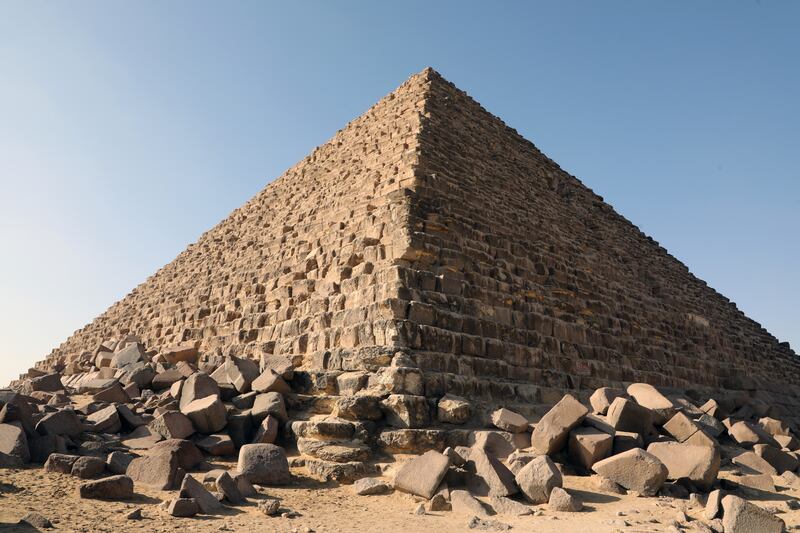Egypt has scrapped a controversial plan to reinstall granite cladding on the Pyramid of Menkaure, the smallest of the three great structures of Giza.
The Menkaure Pyramid Review Committee (MPRC), formed by the Ministry of Tourism and Antiquities, unanimously objected to the reinstallation of the granite casing blocks that have been scattered around the base of the pyramid for centuries.
Following extensive meetings and visits to the Menkaure pyramid, the committee disapproved of the reinstallation, “underlining the importance of maintaining the pyramid's current state without alterations, given its exceptional universal and archaeological value”, the MPRC said in a report.
The project aimed to recreate an outer shell of granite on the four sides of the structure, leading to outrage among experts.
“All that is missing is covering the Pyramid of Menkaure with tiles. When will this absurdity in dealing with ancient Egyptian heritage stop?” Egyptologist Monica Hanna said on the X social media platform. “All international rules and principles of restoration prohibit such interventions. All archaeologists must act immediately.”
Part of a collaboration between the Egyptian government and Japanese archaeological experts, the plan involved reconstructing the cladding from blocks that are around the pyramid.
The committee, however, agreed in principle to carry out archaeological excavations at the site, provided that a comprehensive plan is submitted before work begins, the Egyptian Ministry of Tourism and Antiquities said.
Last month, the Secretary General of Egypt’s Supreme Antiquities Council Mostafa Waziri described this plan as “the project of the century”.
The announcement led to several archeologists denouncing it on social media networks and called on the United Nations Educational, Scientific and Cultural Organization (Unesco) and academics to stand up and speak out.
The seven-member MPRC committee had given initial consent to excavate Menkaure pyramid’s boat pits, but only after a “clear and detailed scientific study”.
Zahi Hawass, a former minister of antiquities who led the committee, had said at the time it would be impossible to determine where each block had originally been.
Replacing them would also require cement, which would ruin the pyramid.
Menkaure was designed to be clad in granite rather than limestone. Only 16 to 18 layers of granite were installed before construction was halted, due to Menkaure’s death in about 2503BC.
Egyptians outraged by restoration project at Giza pyramid








